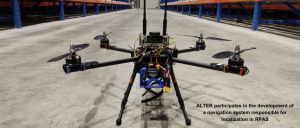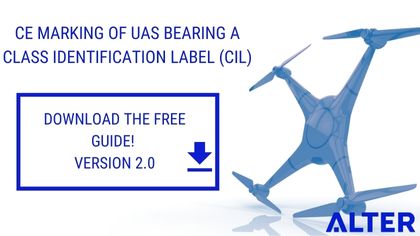This test checks equipment operation by applying repetitive electrical transient bursts over AC, DC, and signal and telecommunication power lines.
Electrical transients and/or bursts are generated by switching maneuvers in the interruption of inductive loads and contact bounce in relays, motors, compressors, etc.
Other types of equipment that unintentionally produce RF electromagnetic radiation energy include inductive load switches, arc welding equipment, fluorescent lights, etc.
⇒ Levels: Depends on the standard: from 500 V to 4 kV.
⇒ Criterion: After the test, the equipment must operate without any degradation or loss of function. A certain degradation of performance is allowed during the test (criterion B, usually).
Power
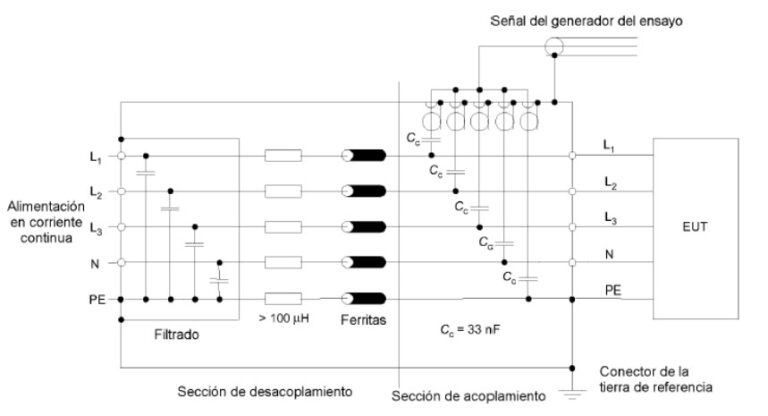
Coupling and decoupling networks
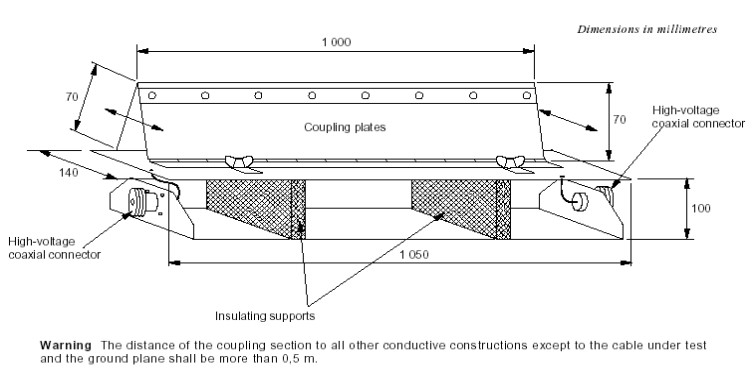
Coupling and decoupling networks
Shock waves
- This test checks equipment operation by applying bursts of overvoltage and overcurrent on AC, DC, signal, and telecommunication power lines.
- Unidirectional shock waves are caused by transient overvoltages, such as those caused by lightning strikes or switching operations.
- The effect of a direct lightning strike on the equipment is not considered.
- Application: In common and differential mode. Furthermore, in the case of AC, the wave is coupled at different phase angles.
⇒ Levels: Depends on the standard: from 500 V to 4 kV.
L⇒ Criterion: After the test, the equipment must be able to operate without any degradation or loss of function. A certain degradation of performance is allowed during the test (criterion B, usually).
Line – Line
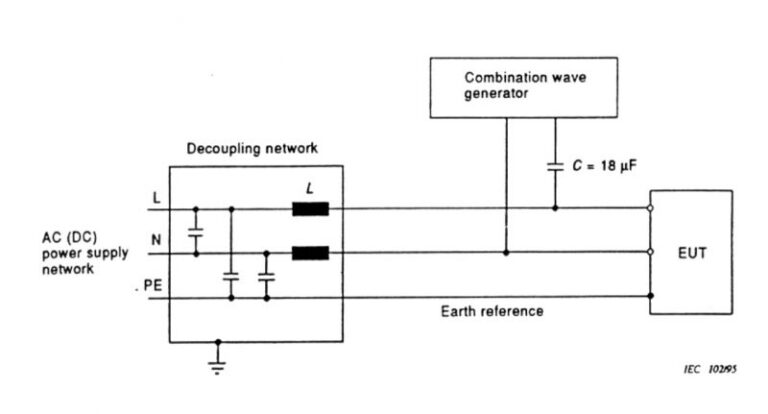
Test configuration – Capacitive coupling AC / DC lines
Line – Ground
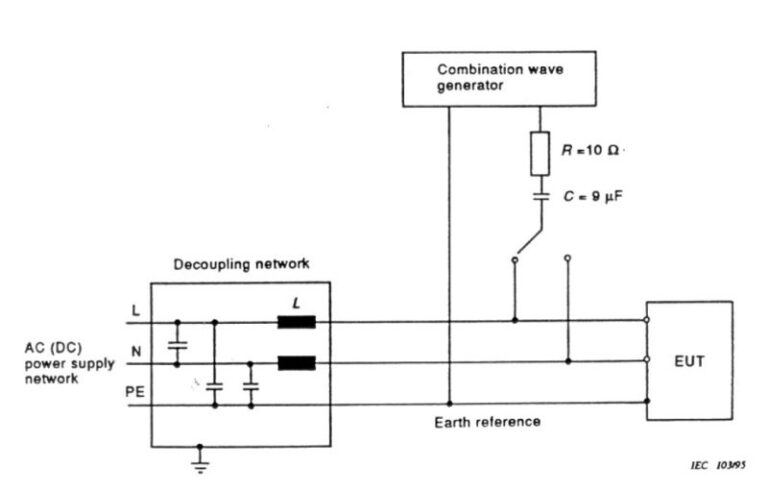
Test configuration – Capacitive coupling AC / DC lines

